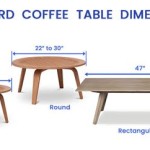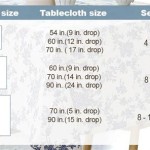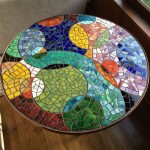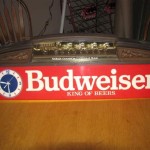How To Protect Your Restoration Hardware Salvaged Wood Table
Salvaged wood tables from Restoration Hardware are prized for their unique character, rustic aesthetic, and eco-conscious appeal. These tables, often crafted from reclaimed timber, possess a history etched into their grain, knots, and imperfections. Owning such a statement piece, however, comes with the responsibility of proper care and maintenance to ensure its longevity and preserve its distinct beauty. This article provides comprehensive guidance on how to effectively protect your Restoration Hardware salvaged wood table from everyday wear and tear, environmental factors, and potential damage.
Salvaged wood, by its very nature, is different from newly sourced lumber. It has already experienced years, possibly decades, of exposure to the elements. This can result in variations in density, moisture content, and overall stability. Understanding these inherent characteristics is crucial for adopting appropriate protection strategies. Regular cleaning, appropriate sealing, and consistent maintenance are essential to safeguarding your investment and ensuring the table remains a cherished part of your home for years to come.
Understanding the Natural Characteristics of Salvaged Wood
One of the first steps in adequately protecting a Restoration Hardware salvaged wood table is understanding its unique properties. Salvaged wood, unlike newly harvested timber, has undergone a natural aging process. This aging process renders the wood more susceptible to environmental changes and potential damage. The level of dryness in salvaged wood is often lower, making it more prone to absorbing moisture from the air, which can lead to warping or cracking. Conversely, excessively dry environments can also cause the wood to shrink. The presence of knots, nail holes, and other imperfections, which contribute to the table's character, also present potential weak points that require attention.
Different types of wood used in salvaged tables will react differently to various treatments. For example, a salvaged oak table may respond well to oil-based finishes, enhancing its natural grain, while a salvaged pine table may require a different type of sealant to prevent yellowing. Knowing the specific type of wood your table is made from will inform your choice of cleaning products and protective coatings. Consulting with a furniture restoration expert or contacting Restoration Hardware directly can provide valuable insights into the best practices for your specific table.
Consider the table's original finish. If the table retains a distressed or weathered finish, aggressive cleaning methods or harsh chemicals can further erode this outer layer. Conversely, if the table has been refinished with a protective sealant, the choice of cleaning products and polishing methods must be compatible with the existing finish to prevent damage or discoloration. Always test cleaning products or finishes on a small, inconspicuous area of the table before applying them to the entire surface.
Implementing Preventative Measures: Cleaning and Sealing
Consistent preventative measures are vital for safeguarding your salvaged wood table. Regular cleaning and appropriate sealing are the primary defenses against everyday wear and tear, spills, and environmental factors. A simple cleaning routine, performed regularly, can prevent the buildup of dust, dirt, and grime, which can scratch or dull the table's surface over time. Sealing the wood provides a protective barrier against moisture penetration, staining, and other types of damage.
For routine cleaning, use a soft, damp cloth to gently wipe down the table's surface. Avoid using harsh detergents, abrasive cleaners, or scouring pads, as these can scratch or damage the wood. Consider using a specialized wood cleaner specifically formulated for salvaged wood furniture. These cleaners are designed to remove dirt and grime without stripping the wood's natural oils or damaging its finish. Always follow the manufacturer's instructions carefully when using any cleaning product.
Sealing the wood is crucial for long-term protection. The type of sealant you choose will depend on the existing finish, the type of wood, and the level of protection you desire. Options include oil-based finishes, wax finishes, polyurethane sealants, and water-based sealants. Oil-based finishes penetrate the wood, enhancing its natural grain and providing a durable, water-resistant barrier. Wax finishes provide a soft, lustrous sheen and offer some protection against moisture, but they require more frequent reapplication. Polyurethane sealants create a hard, durable surface that is highly resistant to scratches, stains, and water damage. Water-based sealants are low in VOCs (volatile organic compounds) and provide a good level of protection while being environmentally friendly.
Before applying any sealant, ensure the table's surface is clean and dry. Follow the manufacturer's instructions carefully, applying thin, even coats. Allow each coat to dry completely before applying the next. If using an oil-based finish, wipe off any excess oil after a few minutes to prevent a sticky residue from forming. Multiple coats may be necessary to achieve the desired level of protection. Periodically reapply the sealant as needed, depending on the amount of use the table receives and the environmental conditions.
Protecting Against Environmental Factors and Daily Use
Salvaged wood tables are susceptible to damage from environmental factors and the everyday demands of use. Protecting the table from excessive exposure to sunlight, extreme temperatures, and humidity fluctuations is crucial for preventing warping, cracking, and fading. Similarly, taking precautions to minimize scratches, dents, and spills will help maintain the table's appearance and prolong its lifespan.
Sunlight can cause the wood to fade or discolor over time. Position the table away from direct sunlight or use curtains, blinds, or UV-filtering window film to minimize exposure. Extreme temperatures can cause the wood to expand and contract, leading to warping or cracking. Avoid placing the table near heat sources such as radiators, fireplaces, or heating vents. Fluctuations in humidity can also damage the wood. Use a humidifier or dehumidifier to maintain a consistent humidity level in the room, ideally between 40% and 60%. Consider using coasters, placemats, and tablecloths to protect the table's surface from spills, stains, and scratches. Clean up spills immediately with a soft, damp cloth to prevent staining. Avoid placing hot dishes directly on the table, as this can damage the finish.
Consider using furniture pads or felt glides under the legs of chairs and other furniture that will be placed on or around the table. These pads will prevent scratches and dents on the table's surface. Be mindful of sharp objects or abrasive materials that could scratch or damage the wood. When moving objects across the table, lift them instead of dragging them. Regularly inspect the table for any signs of damage, such as cracks, chips, or loose joints. Address any issues promptly to prevent them from worsening. Consult with a furniture repair professional for any significant damage or repairs.
Ultimately, protecting a Restoration Hardware salvaged wood table is an ongoing process that requires consistent attention and care. By understanding the unique characteristics of salvaged wood, implementing preventative measures, and safeguarding against environmental factors and daily use, you can ensure that your table remains a beautiful and cherished part of your home for generations to come. Regular maintenance and prompt attention to any signs of damage will help preserve the table's value and its unique character, allowing you to enjoy its rustic charm and storied history for many years.

How To Protect A Restoration Hardware Dining Table Julie Blanner

How To Protect Unfinished Wood Dining Table From Restoration Hardware

How To Protect A Restoration Hardware Dining Table Julie Blanner

How To Protect A Restoration Hardware Dining Table K Avoid Massive Disappointment

Of My Rh Salvaged Wood Trestle Table

Restoration Hardware Table Finishes Ways To Protect It Dining Room

How To Protect A Restoration Hardware Rh Dining Table

Rh Salvaged Wood Trestle Dining Table In Grey Finish

The Secret To A Restoration Hardware Finish On Any Surface

Trestle Salvaged Wood Dining Table Restoration Hardware








